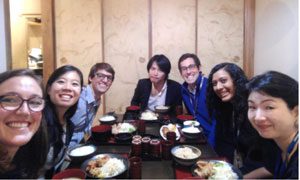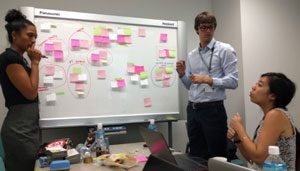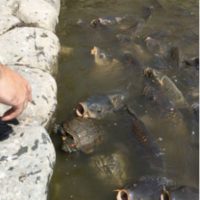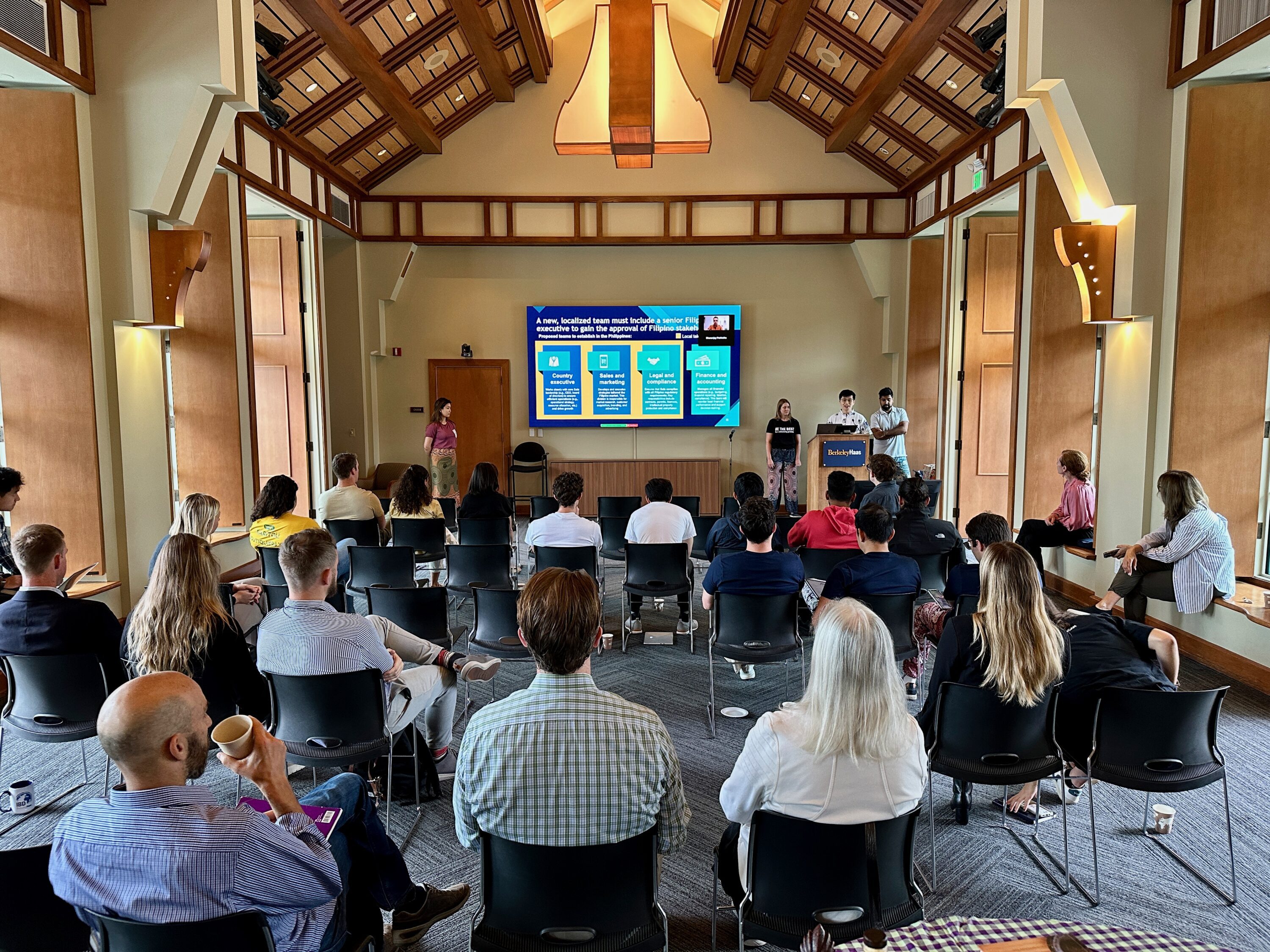Team IBD Japan Takes on a Timely Issue: Media and the US Market
Written by Federico Alvarez Del Blanco, Diego Butrich, Kim Long, Angela Napit, and Kasey Koopmans
The US media is having a moment. According to Donald Trump’s twitter account, “the media is the enemy of the American people.” Counter to his bold-faced claim, a recent AEI report found that the majority of registered voters do *not* think the industry is their enemy. That being said, confidence in the news is eroding and has been for many years in the US. While conducting our own interviews, we found again and again that people are worried about bias and hungry for news sources from outside the American echo chamber, especially after the most recent election.
Media drama isn’t confined to the US. The industry at large is in the midst of an identity crisis. Today’s digital advancements mean that anyone can be a journalist and anyone can share information freely on the web. Free news sites and aggregators have made the new generation believe that news should be free and have made the future of paywalls and ad-based models far from certain.

Enter Nikkei Asian Review

It is against this tumultuous backdrop that our team partnered with Nikkei Asian Review (NAR). NAR is a subsidiary of Nikkei, a company that has been around for nearly 150 years and circulates the most read widely business newspaper in Japan. In 2013, NAR was launched as Nikkei’s new English language product – a weekly magazine and online news source specializing in in-depth, Pan-Asian coverage of business and financial news. In order to bolster its international brand, Nikkei also made the bold move to purchase the Financial Times in 2015. All of these elements (Nikkei heritage, FT expertise moving in-house, increasing need trustworthy news) put NAR in a promising position. Our project was to help NAR tap into one of the most lucrative English-speaking markets and explore their potential in the US. How should NAR position itself in the US? Who is their target audience? And how will NAR connect with and market to that audience?

“Tell me about the last time you read the news”
Since our project was focused on strategy for the US market, the bulk of our field work was based out of our Berkeley home. The first mission was to capture as much information as we could about competitors and their marketing strategy in the US (screen shots on screenshots!). The second mission was to conduct in-depth interviews. Our 30+ completed interviews focused on 1) gathering expert opinions from journalism professors and professionals and 2) consumer news reading habits from target respondents. Armed with a more refined understanding of the media industry, its challenges, as well as its readers and their evolving needs, we hopped on our 19-hour flight to Tokyo.

Konnichi wa, Tokyo!
A few days after our final exams, Team IBD landed in Japan. Our first observation: for a city of 20 million people, it is remarkably quiet, clean and orderly. Even the public transport smelt of perfume (BART isn’t hard to beat)! In our Day of Arrival presentation, we shared our preliminary findings and laid out the work for the weeks ahead. What struck us most that first day, was how invested the entire company was in supporting us.

Designing a strategy
Over the first week, NAR put their project commitment into action. Our calendars were filled with meetings, ranging from representatives from the editorial and marketing teams to the Financial Times. With each meeting, we zeroed in closer on where NAR stood and what they could leverage in approaching a new market.
Combining what we had learned in-country with our in market research, we presented a detailed overview of NAR’s competitors and how they stacked up against NAR along various dimensions at the end of the first week. During the second week, we focused our efforts on defining the target reader. Based on our consumer interviews and the powers of post-it collaboration, our team refined 3 key personas we recommended NAR to target.

Grand finale
Coming into the final week, we finally brought all the pieces together and constructed our recommendations. Our final presentation took place on our final day in the office. It was widely attended by ~45 people, including the editor in chief and other senior leaders. We were thrilled to receive their earnest engagement in our final discussion. They promised that when we visit NAR in a year’s time, it will look like a whole new organization.

When we gathered for a team drink post-presentation, we all agreed: best IBD project ever (note: unadulterated bias). When not absorbed with the fascinating problem we were helping solve, Japan showed us a helluva good time. From wondrous meal after wondrous meal to kabuki theater to strikingly beautiful temples and shrines, Japan’s charms wouldn’t quit. We all spent the three weeks with anime-inspired stars in our eyes. Amidst all the adventures, the highlight for us all was the karaoke. We did it all for the karaoke.







